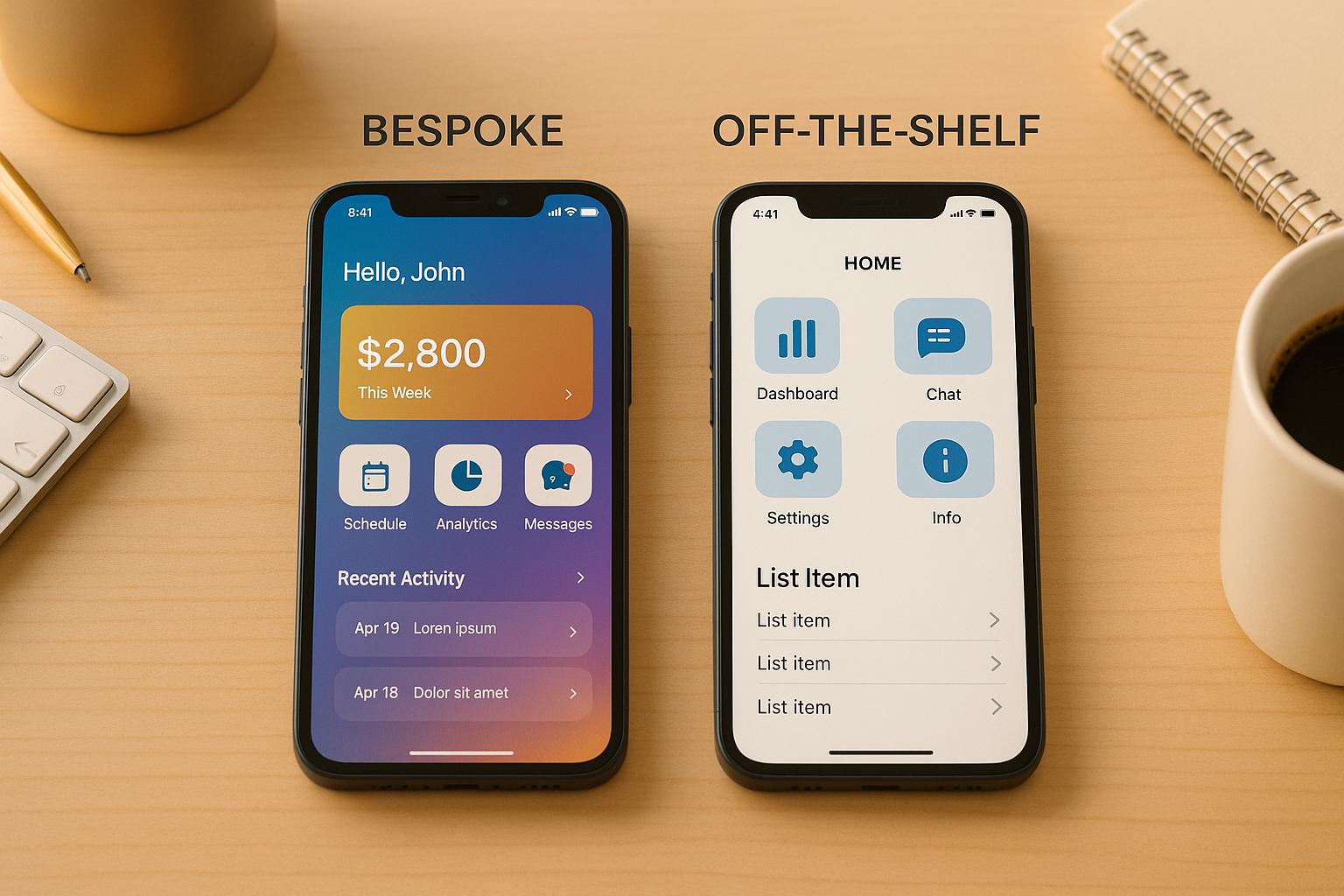Struggling to decide between long-term contracts and pay-as-you-go pricing? Here's a quick breakdown to help you choose the best fit for your business:
- Long-Term Contracts: Offer stable, predictable revenue but require higher upfront costs and extended customer commitment. Best for businesses needing consistent income and resource planning.
- Pay-As-You-Go (PAYG): Provides flexibility with usage-based billing but comes with variable revenue and more complex tracking. Ideal for services with fluctuating customer usage or price-sensitive markets.
Quick Comparison
| Feature | Long-Term Contracts | Pay-As-You-Go |
|---|---|---|
| Revenue Predictability | High (steady income) | Low (usage-dependent) |
| Customer Commitment | Extended | Minimal |
| Initial Cost | Higher | Lower |
| Billing Complexity | Simple | Complex |
| Growth Potential | Stable but limited | Higher |
Key takeaway: PAYG is great for flexibility and scaling, while long-term contracts provide financial stability. Analyze your cash flow, customer behavior, and market trends to make the right choice.
Review Your Business Requirements
Check Your Cash Flow Status
Before diving into a pay-as-you-go model, take a close look at your cash flow. Can your business manage fluctuating revenues, unexpected operational costs, scaling demands, and higher support needs? This model often leads to unpredictable revenue, making it tough to forecast accurately . Once you have a clear picture of your cash flow, analyze customer behavior to better shape your pricing strategy.
Track Customer Usage Data
Keeping tabs on how customers use your product can help fine-tune your pricing:
| Metric Type | What to Track | Why It Matters |
|---|---|---|
| Feature Usage | Most/least used features | Highlights which features add the most value |
| Usage Frequency | Daily/weekly/monthly activity | Identifies patterns in customer engagement |
| Resource Consumption | CPU, storage, bandwidth | Helps calculate the true cost of services |
| User Behavior | Time spent, feature adoption | Provides insight into customer preferences |
"We found that usage heterogeneity has larger role to play in deciding optimal plan rather than traditional value heterogeneity."
These metrics are essential for understanding how your product is used and the costs tied to that usage.
Factor in Product Costs
The data you gather on usage directly impacts your understanding of operational expenses. Development and maintenance costs can vary widely, often ranging from $20,000 to over $100,000 .
- Development Expenses: Includes research, design, software development, UX testing, and quality assurance.
- Operational Costs: Covers infrastructure scaling, customer support, and ongoing system upkeep. A pay-as-you-go model requires advanced tracking and billing systems to handle these demands.
- Long-term Maintenance: Involves replacing equipment, updating software, and ensuring security measures are in place.
Starting with a Minimum Viable Product (MVP) is a smart way to test your pricing model and keep initial costs low .
Research Customer and Market Data
Survey Target Customers
To understand what customers value and how much they're willing to pay, structured pricing surveys are essential. Popular methods include Willingness to Pay (WTP) surveys and the Van Westendorp Price Sensitivity Meter .
| Survey Method | Best For | Key Insights |
|---|---|---|
| Willingness to Pay | Direct price preferences | Identifies maximum acceptable price points |
| Van Westendorp | Price sensitivity analysis | Determines optimal price ranges and thresholds |
| Gabor-Granger | Price elasticity | Measures purchase likelihood at various prices |
| Conjoint Analysis | Feature value assessment | Evaluates trade-offs between price and features |
When designing your survey, tailor questions to your audience. For instance, enterprise clients often prioritize pricing stability, while startups may look for flexibility .
"Customer feedback tells us what we do right, what we do wrong, and – most important – what we can do better." - Mat Jachna, CEO
These insights provide a foundation for exploring competitor strategies.
Study Competitor Prices
Once you've gathered customer data, the next step is to analyze competitor pricing. This can reveal gaps in the market and potential opportunities. Start by identifying both direct competitors (offering similar products) and indirect competitors (serving the same audience with alternative solutions) .
Consider companies like Warby Parker and Dollar Shave Club. They successfully disrupted their industries by identifying and capitalizing on pricing gaps .
Combine these findings with continuous market monitoring to refine your pricing approach.
Monitor Market Changes
Staying competitive means keeping a close eye on market trends. Pricing intelligence tools can help:
| Tool | Starting Price | Primary Function |
|---|---|---|
| Semrush | $139.95/month | Digital marketing analysis |
| Brandwatch | $800/month | Tracks online discussions |
| Exploding Topics Pro | $39/month (annual) | Identifies emerging trends |
Leverage tools like price scraping and AI-driven analytics to uncover pricing patterns . This can help you decide whether long-term pricing models or pay-as-you-go options better suit your market.
For a well-rounded strategy, combine competitive intelligence tools with social media monitoring. This approach gives you a clearer picture of customer sentiment and upcoming trends . By using multiple channels, you can align your pricing decisions with both current market realities and future shifts.
8 SaaS pricing models explained under 3 minutes
sbb-itb-01010c0
Compare Model Strengths and Weaknesses
Let’s dive into how each model performs, based on earlier discussions around business needs and market research.
Long-Term Contract Results
Long-term contracts offer steady revenue and make resource planning easier. Businesses often enjoy financial stability and stronger client relationships through these agreements . However, Luke Dane, Founder & Director of Sprocket Digital, points out a downside:
"I think long-term contracts mostly serve the agency as they can lock down reoccurring revenue for a set period, but the client is stuck regardless of the outcome, which puts them at a clear disadvantage. If a partnership is not going so well, it ultimately becomes a disadvantage for both parties."
This highlights a key risk: when circumstances change, such rigid agreements can hurt both sides. That’s where the Pay-As-You-Go (PAYG) model offers a contrasting approach.
Pay-As-You-Go Outcomes
Usage-based pricing has shown revenue growth of up to 29.9% year-over-year, surpassing industry norms . It’s a great fit for businesses with diverse customers and fluctuating usage patterns. However, while it’s flexible, it can make revenue less predictable and retaining customers more challenging.
Side-by-Side Model Comparison
Here’s a quick look at how the two models stack up:
| Aspect | Long-Term Contracts | Pay-As-You-Go |
|---|---|---|
| Revenue Predictability | High (guaranteed income) | Low to Moderate (usage-dependent) |
| Customer Flexibility | Limited (fixed terms) | High (usage-based scaling) |
| Pricing Complexity | Simple (straightforward billing) | Complex (detailed usage tracking needed) |
| Upfront Cost | Higher (requires commitment) | Lower (pay only for actual usage) |
| Growth Potential | Stable but limited | Higher |
| Resource Planning | More predictable | Requires dynamic adjustment |
Joshua Kimmes, Owner of Bear North Digital, highlights the stability benefits of long-term contracts:
"The advantages of a long-term contract are planning and stability. You have really good insight into what your bandwidth is going to be and what resources will be required."
Ultimately, businesses weighing these options need to align their choice with their goals and customer expectations, especially as flexible pricing models gain traction in the market.
Select Your Pricing Model
Once you've assessed your business needs and market data, it's time to pick a pricing model. Let’s break down the steps to help you make the right choice.
Decision Steps
Start by examining usage trends and revenue objectives. Data shows that businesses with variable usage often perform better with pay-as-you-go pricing, while those with steady usage patterns typically benefit more from long-term contracts .
Here are some key points to guide your evaluation:
- Look at Usage Patterns: Study your usage data. If consumption fluctuates, a pay-as-you-go model might work best. For consistent usage, fixed-term agreements can offer better value.
- Define Value Metrics: Establish a clear link between spending and the value customers receive. For example, cloud services often use metrics like storage or processing power to demonstrate value .
- Align with Market Position: Ensure your pricing matches your brand image and the expectations of your target audience .
If no single model feels like the perfect fit, consider combining approaches.
Mixed Model Options
"The best litmus test of pricing is your customers"
A hybrid model could help you balance diverse customer needs with steady revenue. Below are some popular combinations:
| Hybrid Model Type | Best For | Key Benefit |
|---|---|---|
| Base + Usage | Variable usage | Guarantees base revenue while scaling with usage |
| Tiered + Overages | Clear usage thresholds | Offers simplicity with added flexibility |
| Subscription + Features | Distinct value tiers | Captures revenue from different customer segments |
Blending these strategies can help you create a pricing structure that aligns with your goals.
Launch Your New Pricing
Rolling out a new pricing model requires clear communication with your customers. Transparency is key to maintaining trust and minimizing churn .
Here’s how to ensure a smooth launch:
- Test Before Going All In: Start with small-scale trials targeting specific customer segments. Monitor results, gather feedback, and refine as needed.
- Support During the Transition: Offer strong customer support. You might even consider "grandfathering" existing customers into their current plans. Provide clear, easy-to-understand documentation.
- Monitor and Adjust: Keep an eye on how customers respond. Track adoption, satisfaction, and revenue trends. Use the data to make informed improvements.
A well-executed launch can set the stage for long-term success.
Conclusion
Summary of Pricing Models
Choosing between long-term contracts and pay-as-you-go pricing can shape both your business growth and how satisfied your customers are. Each approach addresses different business goals and market demands, with usage-based pricing becoming increasingly popular in today's fast-changing environment.
Pay-as-you-go works best for businesses needing flexibility and the ability to scale with usage, while long-term contracts offer steady revenue and often include more robust feature packages . Understanding these differences helps you make smarter decisions when selecting and applying the right pricing strategy.
Next Steps
Once you've analyzed the pros and cons of each model, here’s how you can move forward effectively:
- Review Your Metrics: Use your existing data and customer feedback to confirm your pricing strategy. Research shows that 61% of companies not currently using pay-as-you-go pricing are planning to explore it .
- Prepare Your Team: Train your sales team on the new pricing structure. According to McKinsey, a well-executed 1% price increase can improve operating results by 8.5% .
- Launch Strategically: Start with a small group of customers, gather feedback, and make adjustments based on their responses.
- Monitor KPIs: Keep an eye on key metrics like acquisition costs, retention rates, and revenue per user. Use these insights to refine your pricing model over time.


